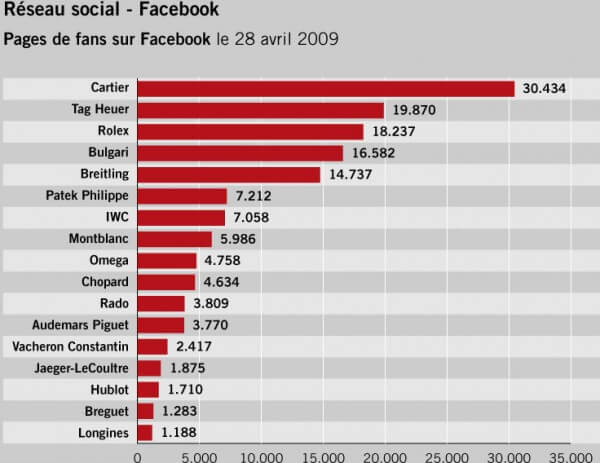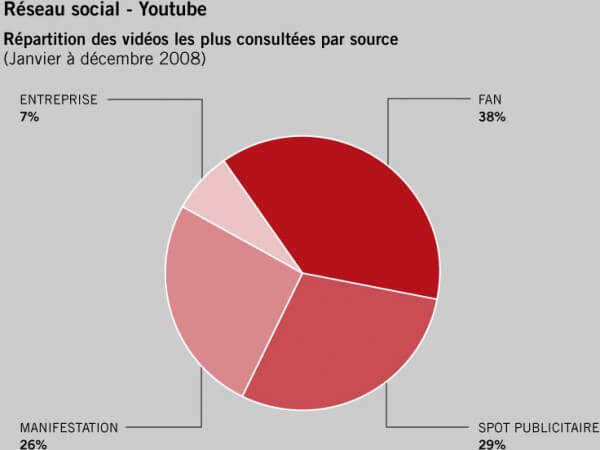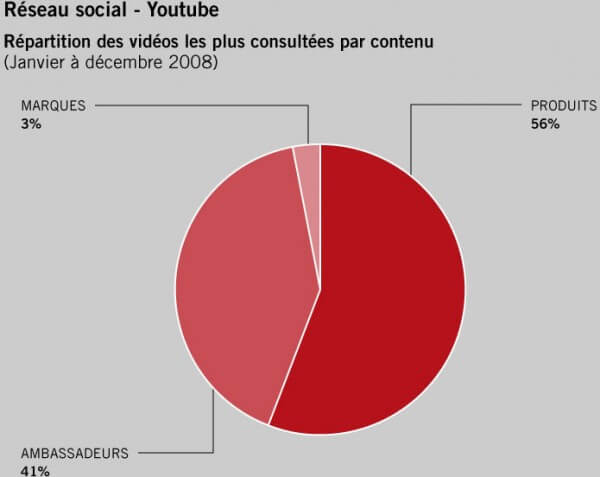Facebook and YouTube are now a part of life for millions of Web users. But is the watch industry lingering on the sidelines of this global phenomenon? Not so sure, considering that Audemars Piguet’s homepage features a link to its channel on YouTube. So have mentalities changed? David Sadigh, managing partner of IC-Agency, and Florent Bondoux, project manager for the World Watch Report and marketing director at IC-Agency, give their views.

Florent Bondoux, project manager for the World Watch Report and marketing director at IC-Agency: The first factor to consider is that these networks now reach everyone, both individuals and companies. Web users are converging on these sites and now spend longer on them than they do on e-mail. As marketing specialists, it was clear to us that these new territories offered potential for brands to develop their communication and visibility, particularly as watch companies are, at the present time, virtually absent from these sites. It’s the users themselves who are creating their own communities about their favourite brands. Just one example: the Breitling community in Portugal is thought to have between 4,000 and 5,000 members. In a context such as this, where the traditional rules of advertising have been turned upside down, it’s essential that brands position themselves in these social networks and adapt their communication accordingly.
David Sadigh, managing partner of IC-Agency: FaceBook has a genuine worldwide presence, with 200 million active users and almost 100 million connections a day. It’s the biggest social networking site in Europe and takes the biggest share of online time in the United States. We are looking at a mass phenomenon that is continually gaining new ground among young generations, and the over-35s in particular. As for YouTube, it is the main channel for multimedia content, as well as ranking high on search engines. YouTube currently garners 25% of Google searches in the United States, and this percentage is set to grow as new transmission technologies become more and more widespread. Our analysis of the watch sector revealed that the most-watched videos on YouTube either feature brand ambassadors, such as Fusion Man for Hublot or Maria Sharapova for Tag Heuer, or content posted by fans giving details of their favourite products, such as the Audemars Piguet Tourbillon Minute Repeater Chronograph.

Florent Bondoux: We’ve observed a marked increase in the number of watch enthusiasts on Facebook. Regarding the 25 brands in our report, this number has increased threefold in six months to reach around 150,000 people. This creates a context that is most conducive to exchanging views. On YouTube, the most popular content is users’ own films, which demonstrates a complete shift in mentalities. In a word, Internet users are taking over brands’ communication and, because of this, brands are becoming dependent on the sentiments conveyed by these fans online.
Florent Bondoux: We’re not saying every brand has to be on these sites. However, even if they don’t approve, either they are already online or will be without knowing. The question then is whether they want to be represented by other people, all outsiders to the brand, or if they want a say in the messages being conveyed, knowing that their target audience is spreading across these networks.
David Sadigh: As stated earlier, this is a completely new frame of reference for fine watch brands. However, we believe these communities give brands an exceptional platform from which they can interact with present and future customers, share their values and reinforce the emotional ties between them and the brand. At a time when numerous firms are cutting back their international promotion budgets, the internet and social networking sites offer an ideal channel for staying in the public eye at less cost, using an effective and quantifiable medium. Basically an alternative that is well worth considering.

David Sadigh: We can summarise in three points. Firstly, brands’ “official” communication is no longer enough, which implies having a strategic presence on social networking sites. Secondly, multimedia communication is gaining in importance and is something the consumer enjoys. Thirdly, each market has its own specificities that need to be understood. These networks are an excellent way of doing this for a more optimal customer approach.
Florent Bondoux: I think brands are coming round to the idea of their own accord, inasmuch as they are looking for alternative solutions. This is something we’re seeing at IC-Agency. It’s no longer unusual for brands to ask for information, even a quote, on how to reinforce their presence in these networks. Generally speaking, brands want to understand this new development, which wasn’t the case a few years ago.












